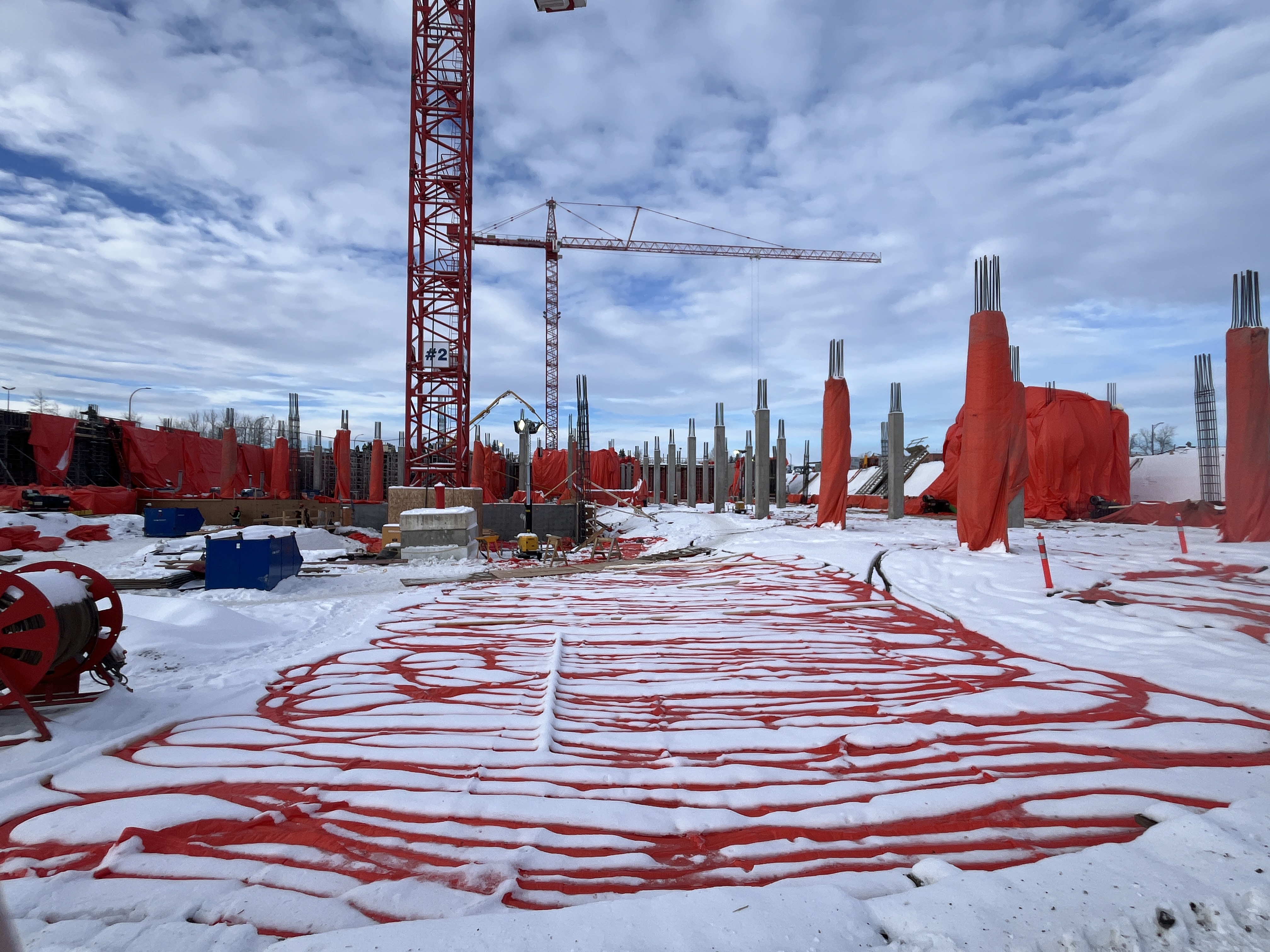Ground heating and new temperature monitoring system

Graham Design Builders prepared for the winter months by implementing their frost protection plan to maintain temperature levels of the foundation subgrade, thereby allowing concrete work to continue through the winter and protecting the ground from frost. This included procuring and installing ground thaw machines and natural gas lines.

Graham has sourced a new-to-market temperature monitoring system to complement the ground thaw machines. The new system provides real-time temperatures of the subgrade to their cellular devices and allows them to turn down or shut off the heaters when they’re not needed. It also ensures compliance, reduces costs, and helps the environment.
Graham has taken a different approach to ground heating with the use of natural gas instead of diesel. Natural gas is more reliable, cleaner to run, eliminates greenhouse gas emissions from regular fuel deliveries, and reduces the amount of greenhouse gas producing fuel being used. Diesel units can have limitations, be prone to mechanical issues in colder weather, and typically run for shorter periods of time to remove frost as opposed to preventing it.
Typically, a ground thaw machine is supplied and installed as a single all-in-one unit. Graham acquired a system that was installed as individual units that work in unison to run cleaner and limit potential re-work or replacement. Individual units also keep a consistent heat to the multiple lines to prevent frost and reduce the volume of glycol that would typically be lost in the event of a line failure.
How does the ground thaw system work?
- There are five individual glycol boilers, and each boiler is 1.8 million BTU.
- The boiler heats the glycol and supplies a fluid exchanger pump with a 2-inch supply and 2-inch return line – which is the main heating element of the system.
- The hot glycol runs through the plate exchanger and back to the heating unit.
- The use of the fluid exchanger pump keeps the fluid from the heating unit separate from the fluid in the field.
- From the fluid exchanger pump, 2-inch supply and return hoses are connected to 2-10 port manifolds.
- From the manifolds, soft ¾-inch glycol lines are connected and run for a maximum length of 1,000 feet.
- This creates a full system where the glycol is pumped from the heating unit to the fluid exchanger pump, which then heats the glycol that’s circulating through the ¾ hose and manifolds therefore resulting in warm, frost-free ground.
How does the new temperature monitoring system work?
-
The temperature sensors are placed strategically throughout the site and at various depths.
- The depths are chosen based on the depth of the footings – some are placed at the bottom, some in the middle, and some shallow.
- A cellular enabled control node collects data at a set frequency (ex: 15 minutes) and then the information is sent to the Cloud where Graham can access the data.
- From the control node, there is an expansion box that can be hooked up to six temperature sensors.
- The system also notifies Graham automatically if/when temperatures drop below a certain set threshold.


Thank you for your contribution!
Help us reach out to more people in the community
Share this with family and friends